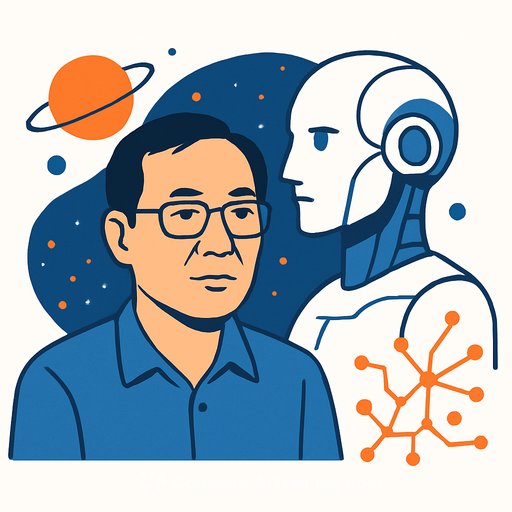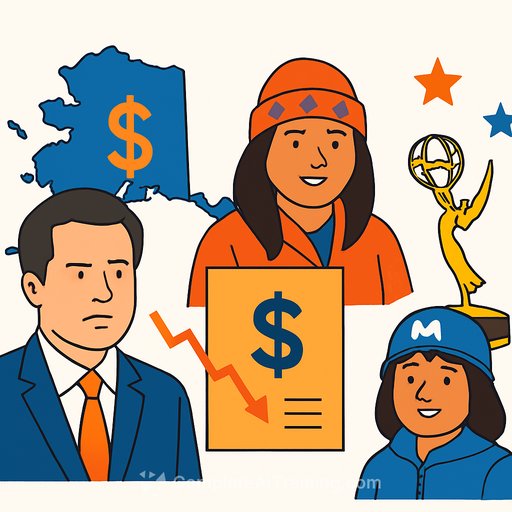AI in Film: A Practical Playbook for Writers
At Industry@Tallinn & Baltic Event during the Tallinn Black Nights Film Festival, the conversation wasn't "AI or not AI." It was: how do we use AI to create better stories, faster, without losing our voice or crossing lines.
The panel brought together director-producer Matt Szymanowski, AI expert and script consultant Maciej Zemojcin, screenwriter Katri Manninen, and moderator Kristen Davis. The theme was clear: use AI to extend your process, protect creative integrity, and respect consent and credit.
What working writers can adopt right now
- Keep the core idea human. As Manninen put it: LLMs tend to give "the most likely answer," which reads generic. Generate the story yourself, then use AI to support the craft.
- Use AI as a capture and cleanup layer. Dictate ideas, keep diaries, and turn rambles into neat notes. Then have AI format copy, remove filler words, and surface scene lists, character bios, and a tight synopsis from your draft.
- Prompt with structure. Feed genre, logline, characters (with roles like hero/antagonist), and your beats. You'll get usable scaffolding without outsourcing your taste.
- Ask for blunt notes. Since models aim to please, explicitly request "brutally honest feedback." It won't replace a partner with skin in the game, but it's instant and unfiltered enough to get you unstuck.
- Use AI for preliminary research and idea validation - then fact check everything. Treat it like a fast brief, not a source of truth.
Development and production are shifting - here's how that affects you
Anna Giralt Gris and Jorge Caballero noted the process is moving from linear to iterative. Boundaries blur: concept, visualization, testing, and revision now happen in loops, including during production.
- Prototype faster: mock scenes, test character voices, and iterate tone with lightweight AI reads or visuals before committing budget.
- Expect "real-time" changes: narratives, visuals, and sound can be tested and adjusted on the fly. Build scripts that can flex without breaking.
Hybrid filmmaking is here
Szymanowski called the future "hybrid." AI can supplement VFX, help with world-building, and accelerate post. In his projection for a feature with several full AI sequences: post timelines can shrink 25-40%, team size 40-60%, and costs by roughly $120,000-$300,000. Fewer bottlenecks. More cycles to get the story right.
Guardrails that protect your story and career
- Transparency: make clear where AI was used in development or production.
- Consent and fair pay: if a person's voice, face, style, or data is used, get explicit permission and compensate.
- Authenticity is the edge: in a feed full of synthetic content, your lived experience and taste win attention.
- Track provenance: keep receipts of prompts, sources, and assets. IP and ownership expectations are in flux - documentation matters.
- Align with policy and union norms as they evolve. For context, see the European Commission's work on AI policy here.
Tool notes for writers
- LLMs: great at structure, summaries, beat sheets, and "what's missing" notes - weak at original voice. Write first, augment second.
- Voice tools: Zemojcin demoed an AI agent speaking with Charlie Chaplin's voice via ElevenLabs. Impressive tech - but only use voice cloning with permission and proper credits.
A simple weekly system to stay sharp
- Hands-on time: 30-60 minutes each week testing one workflow (synopsis cleanup, beat expansion, or research prompts). Build a personal prompt library.
- Ethics one-pager: define your rules for transparency, consent, and credit. Share it with collaborators.
- Provenance log: track sources, rights, and AI assists per project. Saves headaches later.
The mindset shift
Zemojcin urged writers to drop the old dream and adapt. He prefers "technology storytelling" over "film and TV industry." The constant: emotional connection. That doesn't change.
His AI agent, modeled after Chaplin's voice, put it bluntly: the future hinges on whether studios use AI to cut humans out or whether humans use tools with strong norms. The path forward: transparency when AI is used, consent and fair pay for anyone whose work or likeness shows up, and audiences choosing soul over sludge.
If you're ready to skill up
Curate tools that enhance your process as a writer. For vetted options and practical courses, explore AI courses by job and a focused set of AI tools for copywriting.
No fear. Keep the pen. Use the tools. And draw a clear line around what you refuse - and what you'll protect.
Your membership also unlocks:






